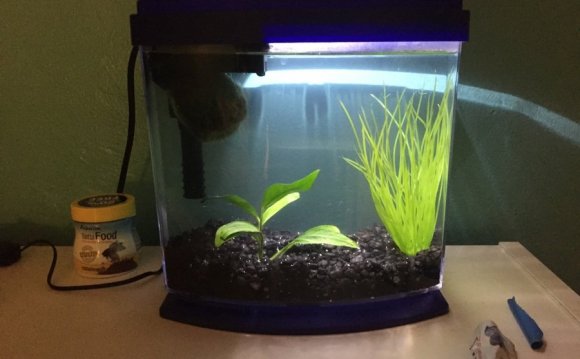
The Betta, which is also known as the Siamese Fighting Fish (Betta splendens) is one of the most popular fishes in the hobby. Any pet store that sells tropical fish will have a display of bettas – usually a rack of individual bowls, each with a single fish. Bettas are available in an almost unlimited number of colors, and fin variations; the most popular are the ones with very long fins, a characteristic of male Betta splendens that has been refined by professional fish breeders. The male betta needs to be kept in his own home as they will fight with other male bettas, sometimes to the death, or at least serious injury, of one or both combatants. And most other fish find their long flowing fins irresistible.
Betta Fish Diseases and Conditions
Bettas are not as susceptible to “diseases” as other fish may be, as most are kept alone their entire lives. With bettas, most problems are because of improper care by the fishkeeper. With other fish kept in an aquarium with their brethren, diseases are introduced with new fish or plants added to the tank, something that does not happen with a fish that is alone his entire life – and very happy that way.
Some of the more common diseases that may affect bettas are also common in tropical fish. These include:
- Ich
- Velvet/Oodinium
- Fungal infections
- Bacterial fin rot
- Body bloat
- Popeye
Oftentimes a water change and some added epsom salt can help to remedy some of these conditions. Use FishChannel’s Search to find more information about these diseases and conditions. -FishChannel editor
The most common problem with bettas is what is simply termed “failure to thrive.” The fish looks “lonely” if we may be allowed to anthropomorphize. The male betta, which displayed beautiful finnage in the local fish store, and was a vibrant color throughout, is dull, fins closed, and lethargic. The most common cause for this is that the betta is being kept at too low a temperature – more about that later.
Fungus and slime coat problems are pretty much the two diseases that bettas suffer. After all, new fish, which may carry ich or other parasites and nasties are not being introduced into the bettas habitat. Fungus can pop up at any time, and usually shows up as small cottony growths on the betta, most often in the mouth area or at the edge of fins. Slime coat problems result in the fish showing patchy areas or blotches on the body, where the color is different from the rest of the fish. Sometimes the slime coat (which all fish have and which protects them – slime is not always bad) will appear to be sloughing off in places, and small trails of the slime coat can dangle off the fish. Both fungus and problems with the slime coat are indications that there are problems with the water in the betta’s tank, and a simple water change and cleaning of the barracks will help with both problems.
Preventing and Fixing Problems
Most of the “diseases” that bettas get are really problems with water conditions and fish husbandry rather than an infection by a bacteria or protozoan. Therefore, it is much more important to concentrate on prevention than cure. There are three areas of betta husbandry that are most important, and if the fishkeeper pays attention to all three you will be definitely assured of success with your betta(s). These are habitat, temperature and food, and we will look at each individually.









